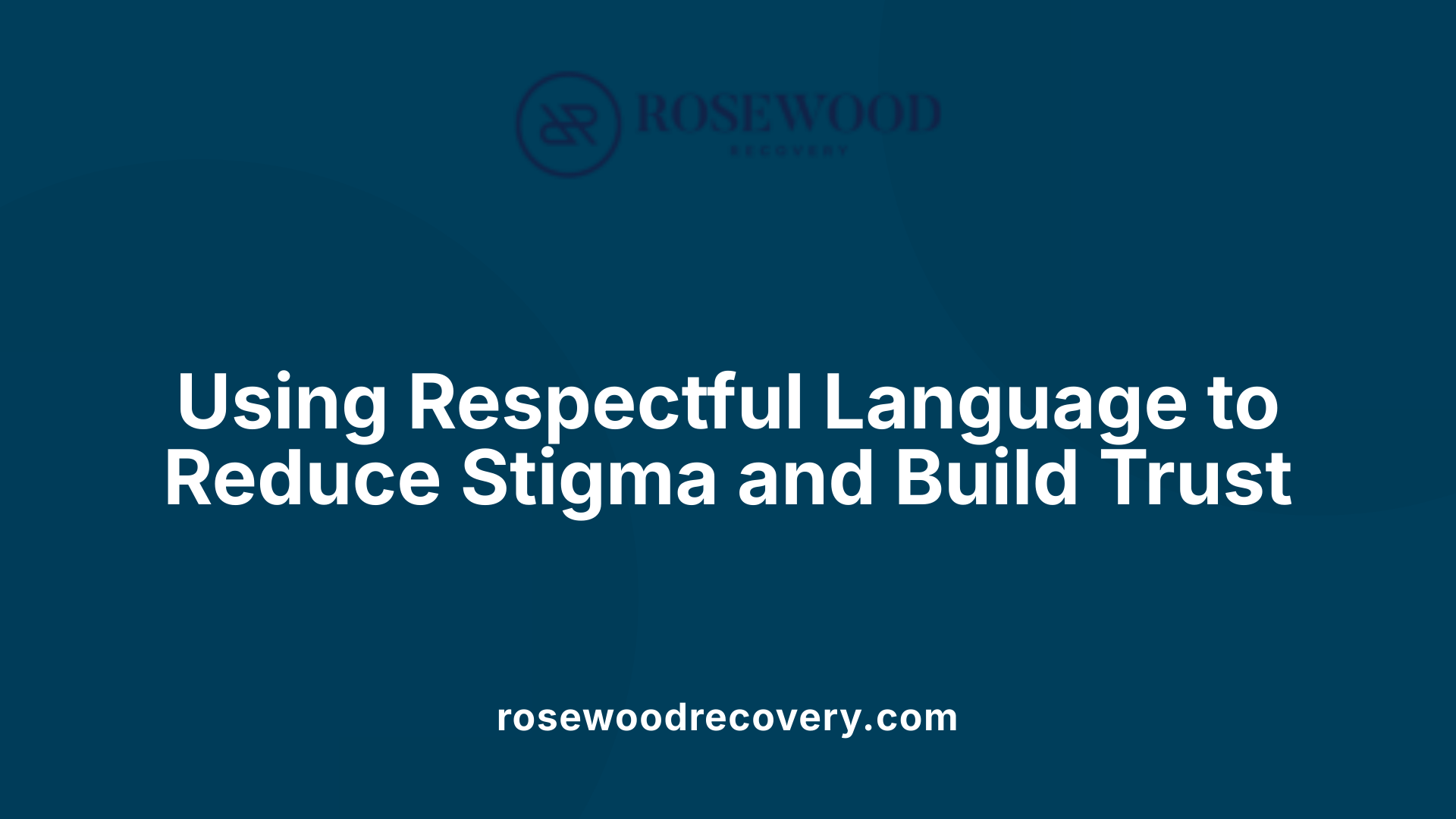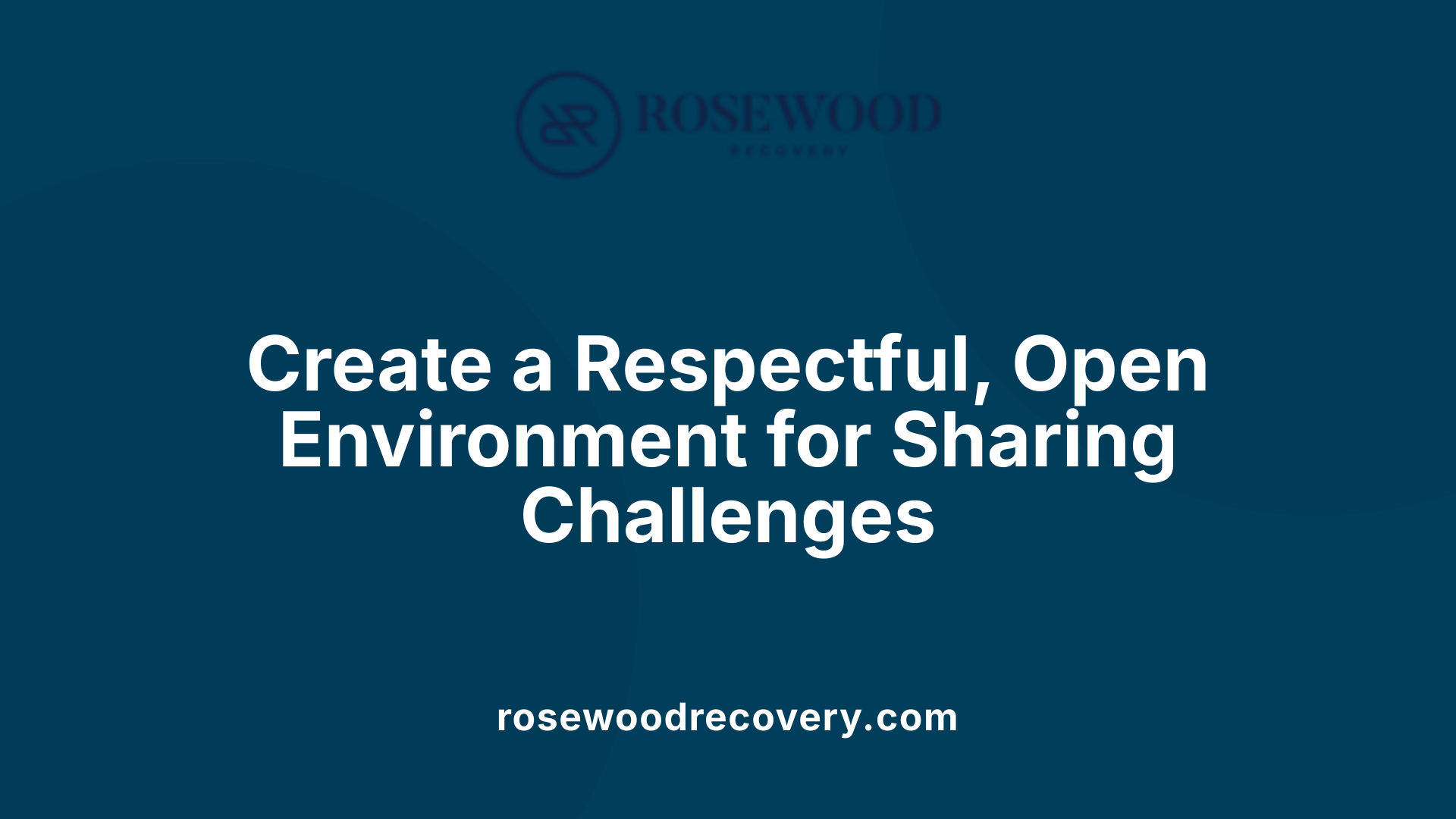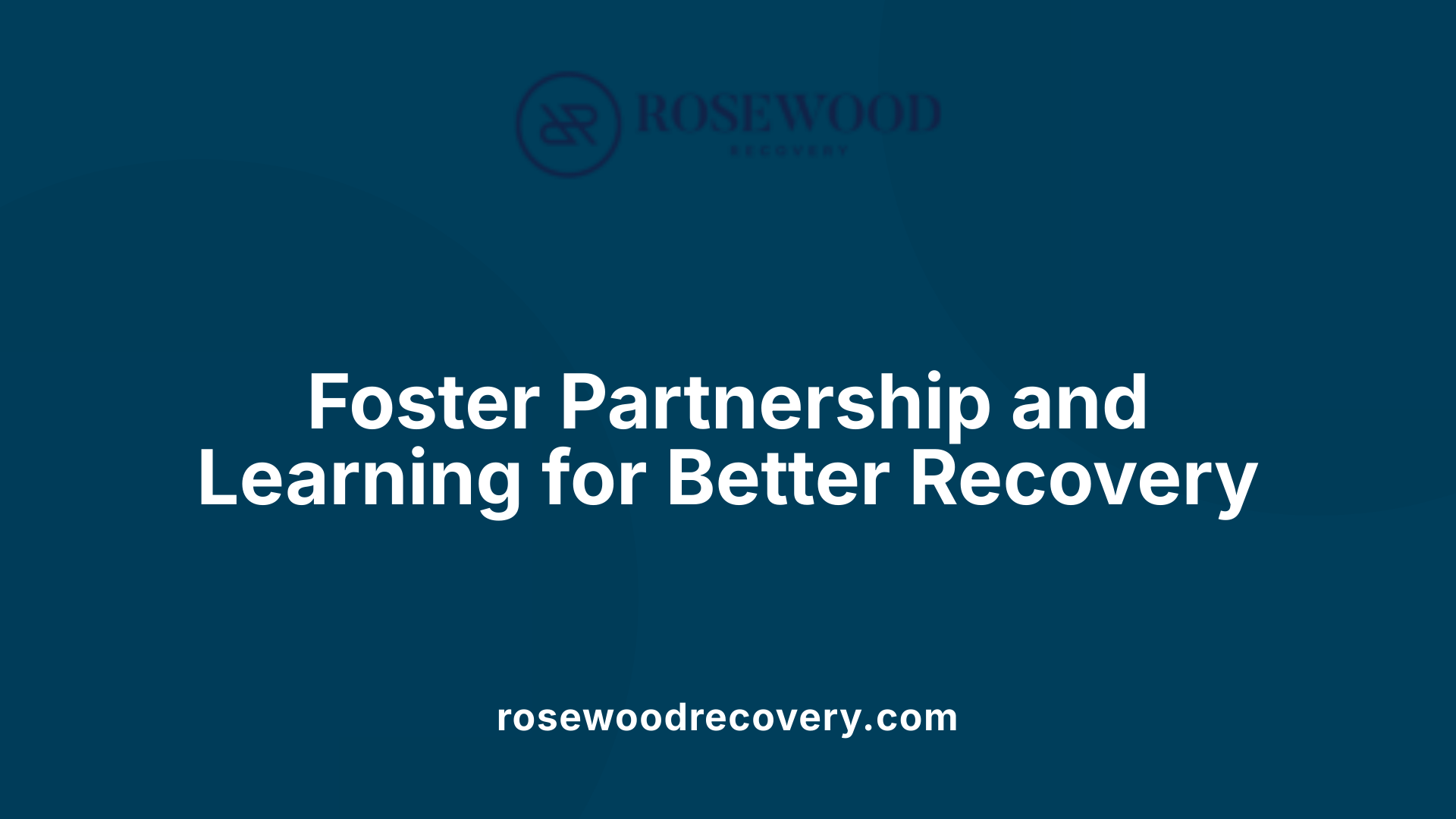How to communicate emotional discomfort without shame
Breaking Barriers: Embracing Openness in Emotional Health Communication

Understanding Emotional Discomfort and the Stigma Around It
Communicating emotional discomfort remains a challenge for many, often shadowed by the stigma and shame associated with mental health struggles and substance use disorders. Recognizing and expressing emotional pain without shame is crucial not only for personal healing but also for building supportive environments that foster recovery and resilience. This article explores strategies and insights into how individuals, families, and healthcare providers can improve dialogue around emotional distress, paving the way for compassionate and effective treatment.
Foundations of Compassionate Communication in Behavioral Health

How can language influence stigma in substance use and mental health?
Language plays a critical role in shaping perceptions and attitudes toward people facing substance use and mental health challenges. Using people-first language—like referring to someone as a "person with substance use disorder" rather than labeling them a "drug addict"—promotes empathy by recognizing the individual beyond their condition. This approach helps reduce stigma, making it easier for patients to engage openly in treatment.
People-first language
This communication style focuses on the person first, not the diagnosis or condition. It shifts attention away from negative stereotypes and encourages dignity and respect. For instance, "person with a mental health condition" instead of "mentally ill person".
Reducing stigma through language
Choosing words carefully can dismantle harmful biases in healthcare and society at large. Avoiding judgmental or sensational terms lessens feelings of shame and isolation among patients, which supports better recovery outcomes.
Importance of empathy and validation
Compassionate communication involves empathy—actively listening, understanding feelings, and validating experiences without judgment. This fosters trust and strengthens the therapeutic alliance, key factors in motivating individuals to pursue and stick with treatment.
By integrating respectful language and empathetic engagement, behavioral health providers create a safe environment that encourages honest dialogue, essential for effective care and healing.
Creating Safe Spaces for Honest Dialogue About Emotional Discomfort

How can clinicians foster open communication regarding substance use and emotional struggles?
One of the most effective ways clinicians can promote open dialogue about substance use and emotional challenges is by creating a safe and respectful environment. This begins with seeking permission before addressing sensitive topics, which shows respect for the patient's boundaries and empowers them to engage willingly.
Clinicians should also pay attention to their body language—maintaining open posture, making appropriate eye contact, and ensuring a calm tone of voice helps patients feel more comfortable and understood. Mindful nonverbal communication can reduce anxiety and build rapport.
Encouraging honest sharing involves active listening, validating the patient’s feelings, and responding without judgment. When patients sense empathy and trust from their healthcare provider, they are more likely to disclose their struggles genuinely, which is essential for effective treatment planning.
Through these techniques, healthcare providers foster a collaborative therapeutic relationship that supports recovery by addressing emotional discomfort safely and compassionately.
Building Trust Through Empathy and Validation

What role does trust play in communicating about emotional discomfort?
Building trust is fundamental when addressing emotional discomfort related to substance use and mental health disorders. Trust fosters a safe space where individuals feel understood and accepted, encouraging openness and honesty in sharing their struggles. This openness is crucial for effective diagnosis and personalized treatment.
Active listening
Active listening is a vital component of building trust. It involves fully concentrating on what the patient says without interruptions, reflecting back their words, and demonstrating genuine interest. This approach helps patients feel heard and respected, laying the groundwork for effective communication.
Validating feelings
Validating feelings means acknowledging and affirming the emotions expressed by patients. It shows empathy and understanding, helping patients feel their experiences are legitimate and cared for. This reduces stigma and promotes emotional safety.
Enhancing patient engagement
When patients feel listened to and validated, their engagement in treatment improves significantly. Engaged patients are more likely to participate actively, adhere to treatment plans, and maintain motivation during their recovery journey. Empathy-driven trust strengthens the therapeutic relationship, essential for long-term recovery success.
Comprehensive Treatment Services: Integrating Communication and Care
What are comprehensive treatment services for substance abuse and mental health issues?
Comprehensive treatment services provide a wide array of interventions designed to support individuals facing substance use disorders and co-occurring mental health conditions. These services begin with thorough assessments by healthcare professionals to create personalized treatment plans that address the unique needs of each person.
Assessment and personalized treatment plans
Treatment often involves a combination of approaches tailored to individual circumstances. These plans may include hospitalization, outpatient programs, residential rehabilitation, and participation in mutual-aid groups such as Alcoholics Anonymous. The goal is to meet clients where they are and offer the most effective arrangements for recovery.
Therapy modalities
Therapeutic approaches play a central role, from Cognitive Behavioral Therapy (CBT) and Motivational Interviewing (MI) to group therapy and mindfulness practices. These therapies help individuals develop coping skills, manage triggers, regulate emotions, and build resilience, all essential for sustained recovery.
Medication management
Medications are often used alongside therapy to control cravings, ease withdrawal symptoms, and prevent relapse. Medication-assisted treatment (MAT) is a critical component, integrating both pharmacological and behavioral techniques for holistic care.
Support groups
Support from peers is invaluable; groups like Al-Anon and Nar-Anon also address the needs of family members affected by substance use disorders, providing education, therapy, and mutual support to strengthen family recovery dynamics.
Encouraging open communication and reducing stigma
An important aspect of comprehensive care is fostering a safe, stigma-free environment. This involves using person-first, medically accurate language, building trust through empathy and active listening, and encouraging open dialogue about substance use and mental health. Such communication enhances patient engagement, promotes collaborative relationships, and supports holistic recovery efforts.
These integrated services aim to address the whole person—physically, emotionally, and socially—ensuring longer-lasting recovery and improved quality of life.
Addressing Co-occurring Disorders for Holistic Healing
Why is it important to address co-occurring mental health disorders alongside substance use disorders?
Addressing co-occurring mental health disorders alongside addiction is vital for a holistic approach to treatment. These conditions frequently influence each other; untreated mental health issues can increase the risk of substance use relapse, while substance use can worsen psychiatric symptoms. Integrated care that targets both conditions simultaneously leads to better overall outcomes and supports sustained recovery.
Recognizing co-occurring mental health and substance use disorders
Many individuals with substance use disorders (SUDs) also struggle with co-occurring mental health disorders such as depression, anxiety, PTSD, or bipolar disorder. Recognizing these overlapping conditions is essential because they often complicate diagnosis and treatment. Effective assessment considers the interplay between these disorders to ensure a comprehensive understanding of the patient’s needs.
Tailoring treatment approaches
Treatment plans should be personalized, combining medication, psychotherapy, and support services that address both mental health and substance use issues. This dual focus may involve cognitive behavioral therapy (CBT), motivational interviewing (MI), medication-assisted treatment (MAT), and other evidence-based interventions that promote coping skills and relapse prevention.
Importance of integrated care
Integrated care promotes collaboration between healthcare providers, patients, and support networks. By addressing both mental health and addiction simultaneously, this approach reduces emotional overwhelm, improves adherence to treatment plans, and fosters stronger therapeutic relationships. This holistic method empowers individuals in their recovery journey, ultimately enhancing resilience and long-term wellbeing.
The Role of Substance Use Counseling in Emotional Expression and Coping
How does substance use counseling assist in communicating and coping with emotional discomfort?
Substance use counseling goes beyond simply helping individuals stop using substances. It focuses on comprehensive healing that addresses the physical, emotional, and social challenges linked to addiction. This holistic approach supports individuals in expressing emotions healthily and managing the discomfort that can arise during recovery.
Counselors work closely with clients to identify emotional triggers that may lead to substance use. They teach personalized coping skills including emotional regulation techniques—such as labeling and expressing feelings constructively—and relaxation exercises that enhance self-soothing and confidence.
Developing personalized coping skills
Each person's experience with addiction is unique. Therefore, counseling emphasizes creating individualized coping strategies. These might involve mindfulness practices, stress management, and cognitive behavioral techniques tailored to the client's specific situations and emotional needs. Practicing these skills builds resilience and equips individuals to handle cravings and emotional challenges more effectively.
Relapse prevention strategies
A vital part of counseling is developing comprehensive relapse prevention plans. These plans help clients recognize warning signs of relapse and understand their emotional and environmental triggers. Strategies often include engaging support systems, maintaining self-care routines, and using relaxation and emotional regulation exercises. Through consistent practice and support, these relapse prevention methods foster sustainable recovery and healthier communication patterns.
By addressing emotional discomfort through structured counseling, individuals are better equipped to cope with stress and maintain long-term recovery from substance use disorders.
Supporting Families: Communication and Emotional Relief

How does substance use disorder affect families, and how can improved communication help?
Substance use disorders (SUDs) create a significant emotional toll on family members. Feelings such as anger, frustration, anxiety, guilt, shame, and embarrassment frequently arise, leading to relationship strain and overall family distress. Families may also encounter economic hardships due to costs related to substance use and additional financial issues like job loss or dependence on assistance programs.
Moreover, family instability often accompanies SUDs, with increased risks of abuse, violence, separation, or child removal by social services. Children in these environments may face neglect, behavioral disorders, poor academic outcomes, and health challenges.
Improved communication is vital in alleviating these burdens. When family members actively participate in treatment through education, family therapy, and mutual support groups, it fosters open dialogue and understanding. This collaborative approach provides emotional relief and enhances support for both the individual facing addiction and their loved ones, ultimately promoting healthier family dynamics.
Mutual support groups such as Al-Anon and Nar-Anon help family members focus on their own recovery journey. These programs offer a safe space to share experiences, build emotional resilience, and develop coping strategies specific to their roles.
Engaging families in the treatment process not only empowers them but also strengthens the individual’s recovery by creating a solid network of empathy and support, which is essential for enduring healing.
Promoting Healthy Coping Skills to Express and Manage Emotional Discomfort

What healthy coping strategies support communication of emotional distress without shame?
Effective communication of emotional distress can be challenging, especially when feelings of shame or embarrassment arise. To support this, adopting healthy coping strategies is essential.
One powerful approach is practicing mindfulness and meditation. These techniques help individuals become more aware of their emotions, develop acceptance, and create a calm mental space to express feelings honestly and without judgment.
Engaging in physical activity also supports emotional regulation. Exercise releases endorphins that improve mood and can provide a healthy outlet for stress, reducing overwhelming sensations that might otherwise hinder communication.
Therapeutic creative expression, such as journaling, painting, or music, allows people to explore and share emotions indirectly. This can make discussing difficult feelings less intimidating and help clarify emotions before verbal communication.
Maintaining structured daily routines provides a sense of stability and predictability that buffers against emotional overwhelm. Additionally, setting boundaries—knowing when to say no or limit stressful engagements—helps protect mental well-being and creates space for honest self-expression.
Complementing these strategies, prioritizing nutrition and sleep supports overall emotional resilience, ensuring individuals are physically prepared to handle distress constructively. Together, these healthy coping skills encourage a non-shaming environment for expressing emotional discomfort, fostering healing and recovery.
Overcoming Barriers: Understanding Substance Use Disorder and its Emotional Impact
What is Substance Use Disorder and its Symptoms?
Substance use disorder (SUD) involves uncontrolled use of drugs or alcohol despite negative consequences. Common symptoms include impaired control over use, social problems, using substances in dangerous situations, tolerance, and withdrawal symptoms. These behaviors seriously impact daily functioning.
How Does SUD Affect the Brain?
Repeated substance use causes long-lasting changes in brain function. These changes influence judgment, decision-making, learning, and memory, which contribute to the compulsive behavior seen in addiction. Understanding these brain effects helps frame SUD as a health condition rather than a failure of willpower.
What Emotional Struggles Underlie Addiction?
Beyond physical dependence, addiction often stems from complex emotional challenges. People with SUD frequently experience intense cravings alongside feelings of shame, guilt, anxiety, or depression. These emotional burdens can perpetuate substance use and create barriers to seeking treatment.
How Does Understanding Substance Use Disorder Help Reduce Shame in Communication?
Recognizing SUD as a medical condition characterized by both behavioral symptoms and brain changes shifts the narrative from blame to understanding. This approach encourages using respectful, people-first language that reduces stigma. Open, empathetic communication about the emotional difficulties related to addiction becomes possible, fostering trust and supporting recovery efforts.
Utilizing Crisis Helplines and Public Health Resources for Immediate Support
What immediate resources aid communication and support during emotional crises?
In times of emotional and mental health emergencies, immediate access to support can be life-saving. The 988 Suicide & Crisis Lifeline is a vital service providing free, confidential help 24/7 to those experiencing suicidal thoughts or emotional distress. Similarly, the Disaster Distress Helpline specializes in assisting people coping with natural or man-made disasters, offering timely emotional support.
How do public health initiatives support behavioral health?
The Substance Abuse and Mental Health Services Administration (SAMHSA) plays a crucial role in improving behavioral health nationwide. It leads public health efforts by promoting prevention campaigns like Substance Use & Misuse Prevention Month and conducting outreach such as the RecoverMe campaign targeted at young adults.
SAMHSA also supports open communication and reduces stigma by providing evidence-based practices, clinical guidelines, and toolkits for healthcare providers and policymakers. Through facilitating grants and funding, it expands behavioral health services and ensures resources reach those in need.
Why is open communication important in crisis support?
Creating safe environments through empathetic listening, validating emotions, and using person-first, medically accurate language enhances the effectiveness of crisis interventions. These approaches help individuals feel understood and willing to engage in timely discussions about their mental health or substance use concerns, which is critical for successful outcomes.
SAMHSA’s combined strategy of offering immediate helplines and advancing public health initiatives provides a comprehensive safety net to support individuals and communities during behavioral health crises.
Empowering Patients Through Collaborative Care and Education

How does collaboration and education promote open communication and recovery?
Patient-provider collaboration in behavioral health encourages a partnership where individuals feel empowered to actively participate in their recovery journey. By fostering a safe environment for open communication, providers promote honesty about substance use and mental health challenges. This transparency is crucial for developing personalized treatment plans that effectively address each person's unique needs.
SAMHSA supports this collaborative approach by offering evidence-based practices, clinical guidelines, and toolkits to healthcare providers and policymakers. These resources provide structured frameworks that enhance the quality of care and ensure treatments are grounded in the latest scientific knowledge.
Education plays a pivotal role in empowering patients. Access to accurate information helps individuals understand their conditions, recognize triggers, and learn coping strategies. This knowledge reduces stigma and promotes a sense of self-advocacy, encouraging patients to discuss their emotional discomfort without shame.
Together, collaboration and education enhance treatment adherence and build trust through empathy, active listening, and validation. This partnership forms the foundation for long-term recovery, fostering resilience and encouraging individuals to take an active role in their healing process. Ultimately, these combined efforts help build stronger therapeutic relationships and improve overall behavioral health outcomes.
Towards a Culture of Openness and Support
Communicating emotional discomfort without shame is a cornerstone of effective treatment and recovery for substance use and mental health challenges. Through compassionate language, safe environments, and empathetic relationships, individuals are more likely to engage in honest dialogue necessary for healing. Comprehensive treatment services that integrate counseling, medication, family support, and public health resources provide a robust framework to address the complexity of emotional and behavioral health. By fostering collaboration and empowering patients and families, we move towards destigmatizing emotional struggles and building resilient communities where vulnerability is met with understanding and care.
References
- Home | SAMHSA - Substance Abuse and Mental Health ...
- How to Talk With Patients About Substance Use Disorder
- What Is a Substance Use Disorder?
- Family and social aspects of substance use disorders ...
- Substance Use Counseling For Lasting Recovery Skills
- Coping Skills for Mental Health in Recovery
- Home | SAMHSA - Substance Abuse and Mental Health ...
- Substance Use Disorder (SUD) Treatment
- 12 Step Program Treatment Centers in Lancaster, CA
More Articles
Recovery Begins Here
Click below to get in touch and schedule a consult call with our team to begin your journey towards happiness and freedom.
Rosewood Recovery does not discrimate against any person because of the race, color, religious creed, ancestry, age, sex, sexual orientation, gender identity, national origin, handicap or disability or the use of a guide or support animal because of the blindness, deafness or physical handicap.





